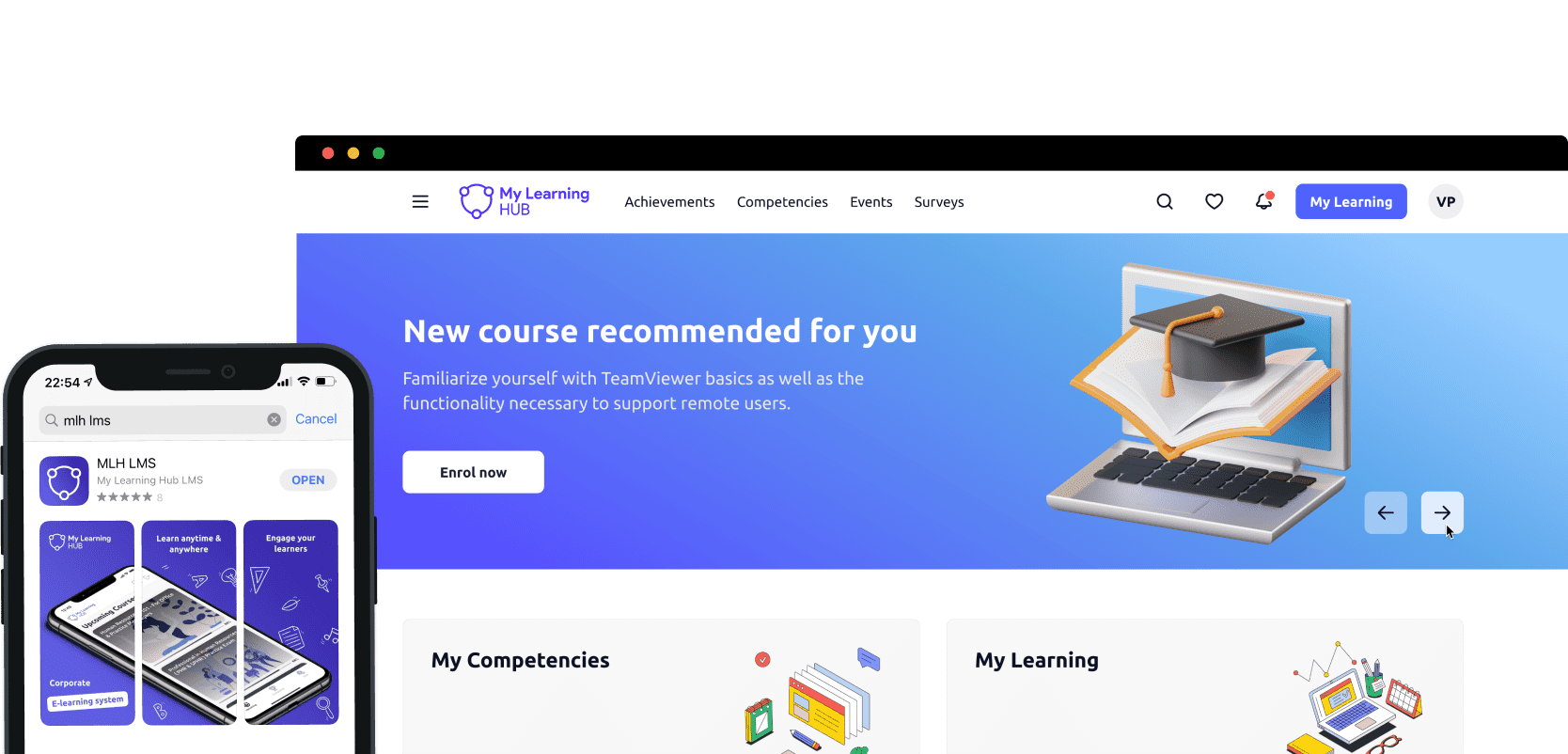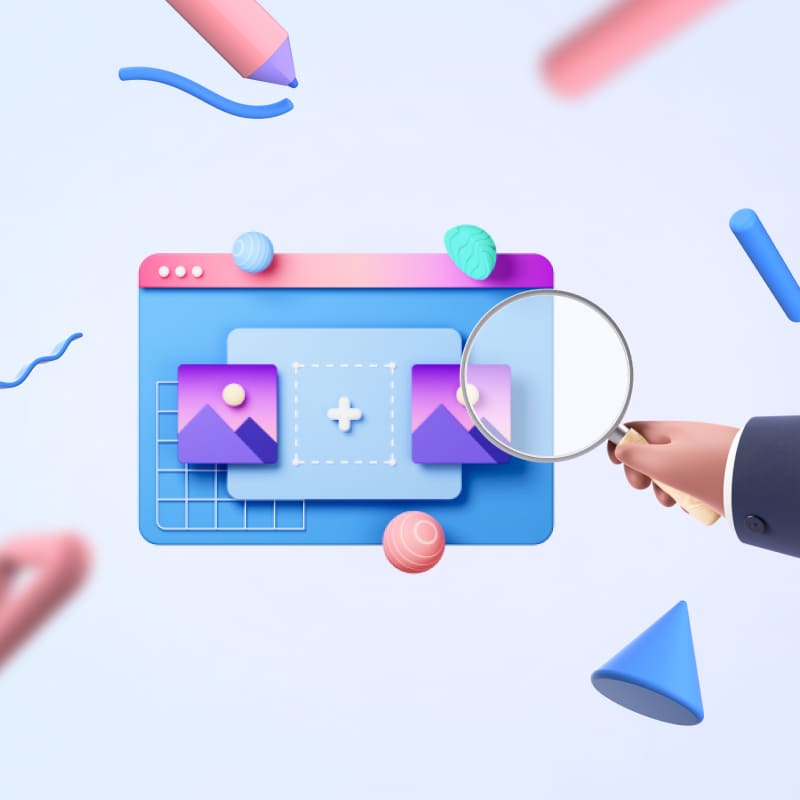
As always, and even more so in this era, change is ever constant. You blink, and the world has changed. A little over two years ago, organisations across the world were thrown into turmoil as they adjusted to the realities of not being able to carry on business as they had since they started out. Today, working remotely is a familiar term to one and all. Change is something many of us shirk at because it's laced with uncertainty and the need for adaptation, among other discomforts. Selling change, especially under circumstances that are not forced like the pandemic, is not an easy task.
So, I get it when you tell me you don't know how to go about convincing stakeholders to roll out LMS to improve your efficiency. I've been in those same shoes trying to get buy-in for something I believed in. Rest assured, you're not alone in this, but you can beat the hurdle and win this.
I'll tell you how, but let's first discuss the power that an LMS give to internal training in an organisation. After all, you can't successfully sell what you don't fully understand.
Contents
-
Power your internal training with an LMS
-
Benefits of selling LMS internally
-
Overcome resistance
-
Take ownership
-
Address fears
-
Create widespread enthusiasm
-
-
Benefits of an LMS to your organisation
-
Eases training rollout
-
Saves more than a penny
-
Makes onboarding look effortless
-
Learn en masse! Grow en masse!
-
Ticks off compliance
-
-
How to promote your LMS internally
-
Step 1 – Survey the situation
-
Step 2 – Establish your case
-
Step 3 – Start at the top
-
Step 4 – Build an A-Team
-
Step 5 – Communicate the vision
-
Step 6 – Get them involved
-
Step 7 – Launch and celebrate
-
-
Conclusion
Power Your Internal Training With an LMS
To achieve your goal of a new LMS that your entire organisation is excited about starts with you. Your energy and passion are what will feed the whole campaign and project beyond when it goes live. You should be strategic about selling the idea. You know your organisation – and if you don’t, you need to get that done and enlist reinforcements who will fill you in on the gaps.
Using the pain points of real-time training, your unique industry demands, and the location or the structure of your organisation, build a strong case on the loopholes that need to be filled.
Even if the problems are not glaring enough, focus on the benefits in terms of efficiency, cost, simplicity, and the potential of having a more cohesive and coordinated team. With the right LMS, you are empowered to streamline learning in interactive, convenient, and flexible delivery modes that keep your corporate learners motivated.
Here’s why you need to sell your LMS internally before adoption.
Benefits of Selling LMS Internally
It is important to sell your LMS within the organisation not just to management, but to everyone to make reception smoother and easier.
1. Overcome Resistance
When stakeholders understand the problem, the task ahead and the benefits of adopting new LMS to the organisation, they make the process of transition easier.
2. Take Ownership
With stakeholder buy-in, it goes from being your project to “our” project, and everyone feels like they have a stake in the new LMS.
3. Address Fears
By selling the LMS internally to management and employees, you are in a position to address fears that may go unnoticed if the stakeholder buy-in is not sought. Expectations are also better managed when everyone is abreast of key information throughout the process.
4. Create Widespread Enthusiasm
When the whole organisation is aware of the benefits of the LMS, enthusiasm for the benefits and how it would make work, learning and life easier individually will occur. This will lead to an overall higher degree of morale across the organisation, possibly boosting productivity ahead of the adoption of the new LMS.
Think about it! An entire workforce is excited about the same thing, albeit for different reasons. It’s like a stadium full of cheering fans just before the game.
Benefits of an LMS to Your Organisation
An LMS provides several benefits to your organisation and these are a few key points you can put forward as benefits to your organisation:
Eases Training Rollout
By highlighting how much easier the new HR integration with an LMS will make the learning curve within your organisation, you help stakeholders follow the trail. Whether a whole team needs to be trained on using new software or acquiring a skill; or a few individuals are being trained to take up higher responsibilities; or one person needs to improve their skills on their own; an LMS improves overall efficiency within the organisation.
Saves More Than A Penny
Short-term costs might be daunting if used as the singular measure of the cost of an LMS. However, a proper cost-benefit breakdown in terms of cumulative cost saved in the short and medium term versus the capital outlay required with an LMS will douse any misgivings. Essentially, the LMS is an investment in internal training that saves on travel, logistics and other costs.
Makes Onboarding Look Effortless
With your onboarding programmes synced into your LMS, new hires have a shorter assimilation process and easily feel like a part of the team. Fewer resources, including time, go into orientation and training, and they get the chance to get to know the structure, culture, and policies of the organisation faster and in a more personal way.
Learn En Masse! Grow En Masse!
Whether you are training employees on a new operating system or introducing a new product or service that employees need to understand, your learning platform is your way to do it seamlessly in numbers. Geographic boundaries or the size of the organisation has nothing on you, and you can effectively deliver on your corporate learning strategy without worries.
Ticks off Compliance
Compliance with industry and regulatory standards is made easier with LMS integration. Licences, registrations, and continuous professional development for respective job roles can be kept up to date using the LMS, reducing manual administrative activities. This way, the organisation avoids legal issues and meets its responsibilities by keeping within regulatory standards.
How to Promote Your LMS Internally
With the following checklist, you can promote the adoption of an LMS to replace current training methods in your organisation.
Step 1 – Survey the Situation
An understanding of the organisation’s learning environment and its impact on the business and, in relation to the industry your organisation plays in, is crucial in setting this process in motion. Scrutinise organisational policies and procedures, observe the existing workings of your training programs and scan the organisation and industry for current trends. Listen to employees, customers, regulators and the market (including your competition).
These will deliver the information that you require to build a tailored case for the adoption of internal training via an LMS within your organisation and industry.
Step 2 – Establish Your Case
With the information gathered, determine how your organisation with benefit specifically from adopting an LMS and put your case together. A universal selling point might not cut it if the stakeholders do not see themselves in the problem and the solution. You might end up with distinct selling points for each category of stakeholders, however, all these lead up to an improved HR management system and performance.
Step 3 – Start at the Top
Management buy-in is an essential priority in getting other stakeholders on board. Build a business case that they cannot refute. Tell a story that takes them from the problems and pain points to a solution that provides a win-win for everyone. Include the benefits of online learning, microlearning and blended learning, but ensure you personalise them to your organisation and back this up with data.
Step 4 – Build an A-Team
Once you have management buy-in, assemble a team of champions to take ownership and drive the communication. These individuals also need to be sold on the prospect of adopting an LMS and should be invigorated with the passion to bear, pass on and inspire the message internally. Be careful with whom you appoint on the team as this is crucial to gaining the buy-in of the rest of the organisation. Together, put down a plan of action with milestones in executing the plan. FAQs and other tools should also be provided to guide questions and feedback from the employees.
Step 5 – Communicate the Vision
Start the campaign to get stakeholders informed of the advent of a new approach to training. Consider a good balance between online and offline promotion. Use internal communication channels, including email newsletters, meetings, posters and other media to ensure that everyone gets duly informed about the LMS. Your organisation’s marketing team can be your ally in executing the campaign. Some promotion materials will need to be created and strategically distributed around the organisation. Feedback collection should also be provided for so that these can be addressed.
Step 6 – Get them Involved
Involve employees in the setting up of the LMS by having a sprinkling of them be part of the creation of the process of bringing it to life. They can do this by creating content, contributing to courses or having learning experiences when testing the LMS. Being involved makes acceptance easier as the selected employees can serve as champions of the LMS programme who help other stakeholders accept the LMS.
Step 7 – Launch and Celebrate
Once the new LMS is ready to go live, communicate to stakeholders with internal marketing. Count down together and encourage employees to engage and pursue the new learning experience. Have technical backup available for support from the launch day and give your corporate learners a smooth experience that they can enjoy, celebrate, and share. You can push it up a notch by making involvement and learning experiences more engaging by introducing gamification as an incentive like having a leader board, team challenges, completion of activities on the new LMS or learning points for prizes. This should make it fun and motivate users.
Conclusion
There you have it! Selling an idea is more than just convincing one person or a group of people in one meeting. It is a project within a project, but you need not do it alone.
Book a demo session with My Learning Hub to learn how we can help you through this journey by providing learning technology to serve your learning and development needs.
Frequently asked questions FAQ










